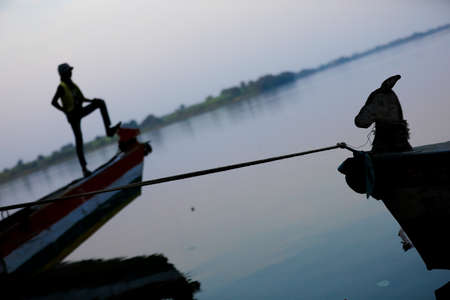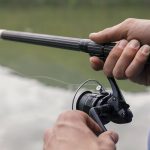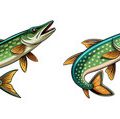Understanding Weather Fronts and Bass Behavior
When it comes to bass fishing, understanding how weather fronts affect fish behavior can be a game-changer. Bass are highly responsive to changes in their environment, and shifting weather patterns—especially cold and warm fronts—can drastically influence where they are and how they bite. By learning how these fronts work and what they do to the water and the bass, you can time your trips better and increase your chances of landing more fish.
What Are Weather Fronts?
A weather front is a boundary between two different air masses. The most common types that impact fishing are cold fronts and warm fronts. These fronts bring changes in temperature, air pressure, wind direction, cloud cover, and precipitation—all of which can impact bass behavior.
Cold Fronts
Cold fronts occur when a colder air mass pushes into a warmer one. This often results in cooler temperatures, clear skies, and high pressure. While this may sound like good weather for people, it can actually make bass fishing tough.
- Before the Cold Front: Bass tend to feed aggressively as pressure drops ahead of the front.
- During the Cold Front: As the front moves through, bass often become sluggish and retreat to deeper or more sheltered areas.
- After the Cold Front: High pressure settles in, making bass less active. You’ll need to slow down your presentation and focus on structure.
Warm Fronts
Warm fronts happen when a warmer air mass moves over a cooler one. This usually brings increased humidity, overcast skies, light rain, and lower barometric pressure—all favorable conditions for bass activity.
- Before the Warm Front: Conditions may still be stable, but fish can start moving shallower in anticipation.
- During the Warm Front: Cloudy skies and rising temps trigger bass to move into shallower waters to feed.
- After the Warm Front: If temps stay warm and stable, feeding activity can remain strong for days.
Bass Behavior by Water Type
The effects of weather fronts on bass also vary depending on the type of water youre fishing. Heres a quick breakdown:
| Water Body | Cold Front Impact | Warm Front Impact |
|---|---|---|
| Lakes | Bass move deeper or hug tight to cover; slower bites | Bass move shallow; increased topwater action |
| Rivers | Bass seek slack water or deeper holes; finesse baits work best | Bass become more active near current breaks or eddies |
| Ponds | Bass may shut down completely; fish deep structure slowly | Bass roam shallows looking for prey; great for reaction baits |
Key Takeaways for Anglers
- Monitor local forecasts closely before planning your trip.
- Fish aggressively right before a front hits—bass will likely be feeding heavily.
- After a cold front passes, downsize your lures and slow down your retrieve.
- Take advantage of cloudy skies and rising temps during warm fronts to fish fast-moving lures in shallow water.
If you know what kind of front is coming and adjust your tactics accordingly, youll put yourself in a much better position to find—and catch—more bass no matter where youre fishing.
2. Pre-Front Conditions: Capitalizing on Aggressive Feeding
When a weather front is on the way—especially a cold front—bass often go into a feeding frenzy. This happens in the hours or even a day before the front actually hits. The barometric pressure begins to drop, and bass instinctively know that tougher conditions are coming, so they take advantage of the stable weather while it lasts. For bass anglers, this pre-front window is one of the best times to be on the water.
Why Bass Feed More Before a Front
Bass have an incredible ability to sense changes in their environment. When barometric pressure starts falling, it triggers a biological response that makes them more active and aggressive. They move out of cover, roam more freely, and are more likely to chase fast-moving baits.
Key Reasons Bass Feed Heavily Pre-Front:
| Reason | Description |
|---|---|
| Barometric Pressure Drop | Bass sense the drop and anticipate less favorable conditions ahead. |
| Cloud Cover Increases | Darker skies make bass feel safer venturing into open water to feed. |
| Increased Wind Activity | Wind stirs up baitfish and creates ideal ambush conditions for bass. |
Tactics to Maximize Your Success
If you know a front is approaching, you’ll want to adjust your strategy to match the bass’s heightened activity level. This means fishing faster and covering more water than usual. Heres how you can take full advantage:
Bait Selection Tips:
| Bait Type | Why It Works |
|---|---|
| Lipless Crankbaits | Loud vibration attracts aggressive fish in open water. |
| Spinnerbaits | The flash and movement mimic fleeing baitfish in windy conditions. |
| Topwater Lures | If cloud cover is thick, topwater baits can trigger explosive strikes. |
Tactical Tips:
- COVER WATER FAST: Use moving baits to locate active fish quickly.
- TARGET SHALLOW AREAS: Bass often push shallow to ambush prey before a front.
- PAY ATTENTION TO WIND DIRECTION: Fish wind-blown banks where baitfish congregate.
- MATCH THE HATCH: Use colors and sizes that resemble local forage for better success.
The Takeaway
The period right before a weather front arrives is prime time for bass fishing. By understanding why bass feed more aggressively during these conditions and adjusting your tactics accordingly, you’ll greatly increase your chances of landing quality fish. Always keep an eye on the forecast and be ready to hit the water when those pre-front indicators start showing up.
![]()
3. Fishing During a Front: Challenges and Strategies
When a weather front is rolling in, especially a cold front, it can really shake things up for bass fishing. One of the biggest changes you’ll notice is falling barometric pressure and increased cloud cover. These environmental shifts have a direct impact on how bass behave—and if you know what to expect, you can adjust your strategy to stay on the bite.
How Falling Barometric Pressure Affects Bass
As barometric pressure drops before a front, bass often become more active. They sense the change and tend to feed aggressively, almost like they’re stocking up before tougher times. However, this feeding window can be short-lived. Once the front passes and pressure rises sharply, their activity levels usually decrease.
Typical Bass Behavior with Falling Pressure:
| Condition | Bass Behavior | Recommended Tactic |
|---|---|---|
| Falling Pressure (Pre-front) | Increased feeding, movement into shallows | Use fast-moving lures like spinnerbaits or crankbaits |
| Low Pressure (During front) | Less aggressive but still catchable | Slow down with soft plastics or jigs near cover |
| Rising Pressure (Post-front) | Lethargic, tight to cover or deeper water | Finesse tactics like drop-shot or shaky head rigs |
The Role of Cloud Cover
Cloudy skies are another key factor during a front. With less sunlight penetrating the water, bass feel more secure venturing out from deep structure or heavy cover. This makes them more likely to roam and hunt in open water or shallow flats.
Cloud Cover Tips:
- Cover More Water: Use search baits like chatterbaits or lipless crankbaits to locate roaming fish.
- Fish Shallower: Don’t be afraid to work the banks or submerged vegetation where bass may move up to ambush prey.
- Keep Moving: Active bass during cloudy conditions means you should stay mobile until you find them.
Staying Productive During a Front
The key to successful bass fishing during a front is flexibility. Monitor weather apps for pressure trends, and don’t stick with one presentation too long if it’s not working. Match your lure choice and retrieval speed to the current mood of the fish, which can change quickly as the front progresses.
Quick Tip:
If youre fishing right before the front hits, its prime time—bass are feeding heavily. Focus on reaction baits and faster retrieves. Once the weather settles into low-pressure mode, slow things down and target specific structures where fish are likely holding tight.
Understanding how weather fronts affect bass behavior helps you make smarter choices on the water. When others are packing up because of changing conditions, youll know its actually an opportunity to catch more fish by adjusting your tactics accordingly.
4. Post-Front Fishing: Adjusting to High Pressure and Clear Skies
After a cold front moves through, bass fishing can get tough. The skies clear up, the wind dies down, and high barometric pressure settles in. This “bluebird sky” weather may look great for a day on the lake, but it often makes bass sluggish and less likely to bite. Understanding how these conditions affect fish behavior—and how to adapt—can make or break your day on the water.
Why Post-Front Conditions Are Tough
Bass are sensitive to changes in barometric pressure. When a front passes and high pressure sets in, bass often move deeper, become less active, and seek cover. The sudden shift in weather can throw off their feeding patterns, making them more cautious and harder to catch.
Common Post-Front Challenges
| Condition | Effect on Bass | What It Means for You |
|---|---|---|
| High Barometric Pressure | Bass become lethargic and hold tight to cover | You’ll need to slow down and be precise with your casts |
| Clear Skies & Bright Sunlight | Bass retreat to shade or deeper water | Target shaded areas like docks, overhangs, or brush piles |
| No Wind or Calm Water | Bass are easily spooked by noise or movement | Use stealthy approaches and finesse presentations |
Tips for Catching Bass After a Front
You don’t have to pack it in just because the bite slows down. Here are some proven tactics that can help trigger strikes when the post-front blues hit:
1. Downsize Your Lures
Finesse baits like drop shots, Ned rigs, or small jigs work great during high-pressure situations. Bass aren’t in the mood to chase big meals, so give them something subtle they can’t resist.
2. Slow Down Your Presentation
This is key. Work your bait slower than you think you should. Let it sit longer in productive zones, especially near cover where bass may be holding tight.
3. Focus on Cover and Structure
Bass will hug tight to anything that offers shade or protection. Flip jigs into brush piles, pitch under docks, or drag soft plastics along deep ledges and drop-offs.
4. Fish Deeper Water
If shallow areas arent producing, try moving out deeper where bass might feel more comfortable. Use your electronics to locate baitfish and structure at greater depths.
5. Stay Stealthy
Avoid making loud noises or sudden movements that could spook already wary fish. Use light line, natural colors, and approach quietly—especially in clear water.
5. Key Gear and Lures for Front-Based Tactics
Understanding how bass react to different stages of a weather front is only half the battle—the other half is having the right gear and lures ready to match those conditions. Whether youre fishing before, during, or after a front, your success can often come down to the equipment you bring and how you use it.
Essential Gear Checklist
Before we dive into lure choices, make sure you’re equipped with versatile gear that can adapt to changing conditions:
- Medium-heavy rod (6’6” – 7’): Great for handling a range of lure types.
- Spinning and baitcasting reels: Have both on hand for finesse or power presentations.
- Braided and fluorocarbon lines: Use braid for heavy cover; fluoro for clear water and subtle bites.
- Rain gear and polarized sunglasses: Weather fronts bring unpredictable conditions—stay dry and spot fish easier.
Lure Selection by Front Stage
The key to choosing the right bait is knowing how bass behave at each stage of the front. Heres a breakdown of what to throw and when:
| Front Stage | Bass Behavior | Recommended Lures | Presentation Tips |
|---|---|---|---|
| Pre-Front | Aggressive and actively feeding | Lipless crankbaits, spinnerbaits, topwater frogs | Cover water quickly, target shallow flats and active zones |
| During Front | Slightly less active, scattered positioning | Suspending jerkbaits, chatterbaits, medium-diving cranks | Slow your retrieve, work mid-depths and edges of structure |
| Post-Front | Sluggish, holding tight to cover or deeper water | Ned rigs, drop shots, jigs with craw trailers | Finesse tactics shine here—fish slow and tight to structure |
Lure Presentation Tips
1. Match Retrieve Speed to Mood
If bass are active (like pre-front), burn those baits fast. If they’re sluggish (post-front), slow way down and give them time to commit.
2. Focus on Structure During Low Activity Phases
Tight cover like docks, brush piles, or submerged timber can hold inactive fish. Present your lure precisely and patiently.
3. Adjust Line Type Based on Water Clarity & Cover
Braid cuts through vegetation but can spook fish in clear water. Fluorocarbon sinks faster and is nearly invisible—perfect for finesse applications post-front.
Pro Tip:
If you’re unsure which lure to start with after a weather change, go with a suspending jerkbait—it’s one of the most versatile options across all front stages.
Having the right gear and knowing when to use specific lures makes all the difference when chasing bass around changing weather fronts. With this setup, you’ll be better prepared no matter what Mother Nature throws your way.
6. Reading Forecasts Like a Pro
If you want to catch more bass, learning how to read weather forecasts like a pro is a game-changer. Weather fronts—cold fronts, warm fronts, high and low pressure systems—can have a huge impact on bass behavior. But dont worry, you don’t need to be a meteorologist to use this info to your advantage. Heres how you can make the most out of your favorite weather app or local forecast.
Understanding Key Weather Terms
Before diving into the apps, lets break down a few common terms youll see in forecasts:
| Term | What It Means for Bass Fishing |
|---|---|
| Cold Front | Usually means tougher fishing right after it passes; bass tend to get sluggish. |
| Warm Front | Often brings better fishing conditions; bass are more active. |
| Barometric Pressure | Bass feed more during stable or falling pressure; rising pressure can slow them down. |
| Wind Direction | Wind from the south often brings warmer air and better fishing. North wind can signal a cold front. |
Using Weather Apps Effectively
Most anglers already have a weather app on their phone, but knowing what to look for makes all the difference. Here are some tips:
Tip #1: Watch for Stable Conditions
If the forecast shows two or three days of consistent weather, especially before a front moves in, that’s prime time to fish. Bass tend to feed aggressively ahead of an approaching system.
Tip #2: Track Pressure Trends
Look at hourly barometric pressure trends if your app shows them. A slow drop in pressure often triggers feeding activity, while rapidly rising pressure (after a front) can shut things down.
Tip #3: Pay Attention to Wind
A steady breeze can push baitfish into certain areas of the lake, bringing bass with them. Use wind direction to decide which banks or points to fish.
Favorite Apps for Bass Anglers
Not all weather apps are created equal when it comes to fishing. Here are a few that work well for U.S.-based bass anglers:
| App | Why Its Useful |
|---|---|
| Weather Underground | Detailed hourly forecasts and radar; includes barometric pressure trends. |
| Windy | Great for tracking wind direction and speed over lakes and reservoirs. |
| The Weather Channel | User-friendly and offers solid overall forecasts with front tracking. |
Planning Around the Forecast
If you’ve got flexibility in your schedule, let the weather guide your fishing trips. Plan outings just ahead of an approaching front, during stable warm periods, or when pressure is dropping slowly. Avoid fishing right after a strong cold front unless youre up for a challenge!
Quick Planning Checklist:
- Is there a front coming? Fish before it hits.
- Is the pressure stable or falling? Time to get on the water.
- Which way is the wind blowing? Target wind-blown shores where bait collects.
- No major changes? That’s good too—bass love stability!
The more you watch the weather and connect it to what happens on the water, the better youll get at predicting those hot bites. With just a little practice, youll be reading forecasts like a seasoned pro—and catching more bass because of it!


